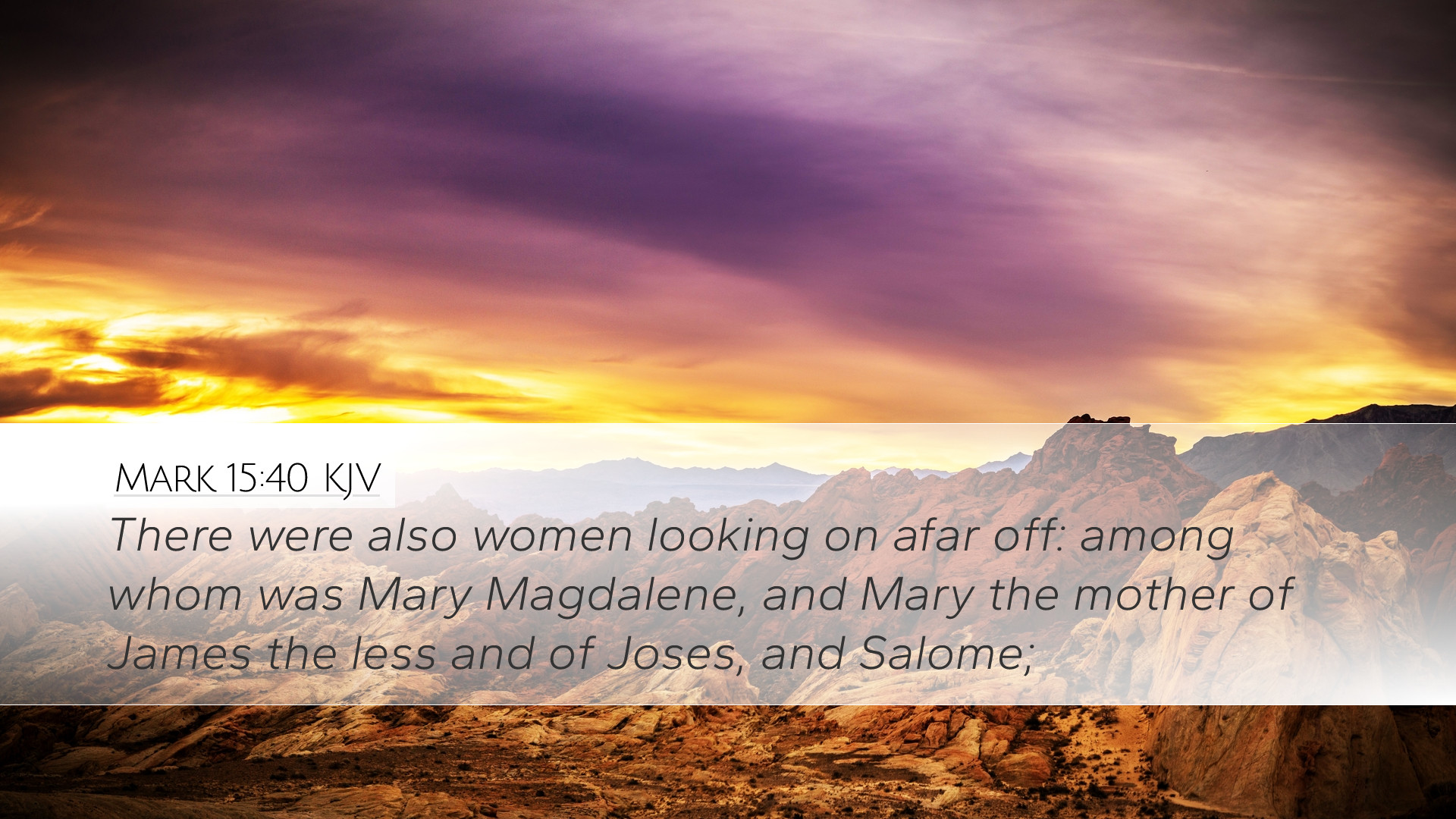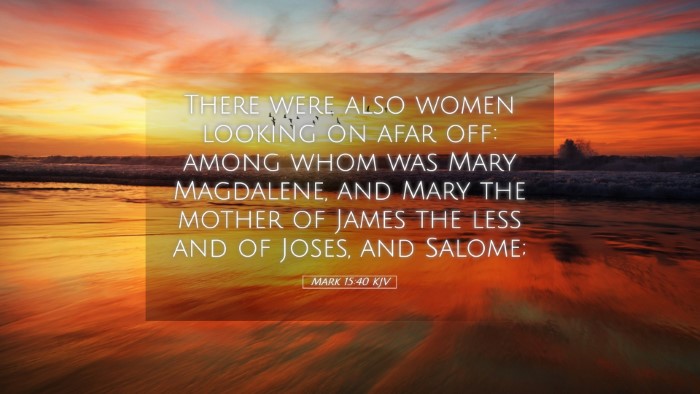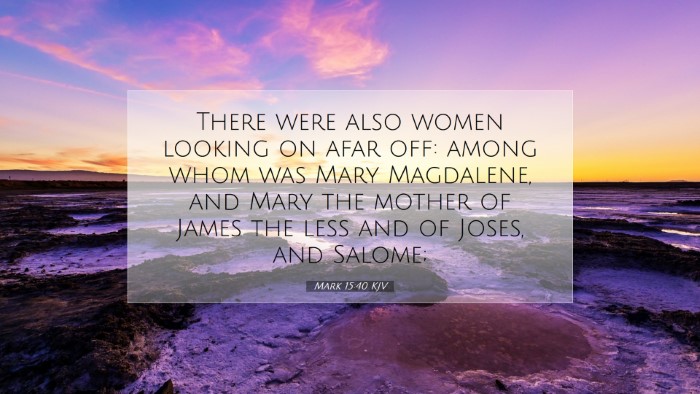Bible Commentary on Mark 15:40
Mark 15:40 describes the poignant scene of the crucifixion, highlighting the women who remained steadfastly at the foot of the cross. It says:
"There were also women looking on afar off: among whom was Mary Magdalene, and Mary the mother of James the less, and of Joses, and Salome."
Historical Context
This verse is set against the backdrop of the crucifixion of Jesus Christ, a pivotal moment in Christian theology. It was a time of great turmoil, where the suffering and humiliation of Christ was forefront, yet amidst it were faithful witnesses.
According to Matthew Henry, the presence of these women emphasizes the loyalty of Jesus' followers, even in the face of despair and societal condemnation. Their role in the narrative is crucial, as they symbolize undying faith and support during a time of great distress.
Significance of the Women
Women often played a significant role in the ministry of Jesus, and their presence at the crucifixion serves multiple purposes:
- Witnesses of Suffering: The women represented those who were emotionally and spiritually invested in Jesus' life and ministry. Albert Barnes comments on this, noting that their distance from the cross may signify the emotional toll of witnessing such suffering.
- Discipleship: These individuals were among the first to support Jesus. Their inclusion in this moment of horror reflects a broader theme of discipleship found throughout the Gospels.
- Symbolism of Persistence: Adam Clarke highlights that their enduring presence amidst the chaos serves as a model for contemporary believers, illustrating steadfastness in trials.
Mary Magdalene
Among the women mentioned, Mary Magdalene holds a prominent position. She is often recognized as a witness to the resurrection and is depicted here in a role of profound dedication:
- Redemption and Transformation: Mary Magdalene's transformation from demon possession to a devoted follower of Christ highlights a central theme of redemption. Matthew Henry notes that she exemplifies how Jesus' ministry impacts the most marginalized, showcasing the transformative power of faith.
- Faithful Witness: Her presence at the crucifixion asserts the importance of women in Jesus' narrative—underscoring that true followers remain in times of despair.
Mary, Mother of James and Joses
The mention of Mary, the mother of James and Joses, further enriches the context. Her maternal ties to the disciples symbolize the intersection of family and faith:
- Motherhood and Faithfulness: Albert Barnes notes that she exemplifies the bond between familial love and spiritual loyalty. Her presence points to a legacy of discipleship.
- Examples for the Church: This maternal role serves as an example for the church today, emphasizing the importance of family in spiritual matters as they encourage one another through trials.
Salome
Salome, another female figure at the crucifixion, represents the various ways women participated in Jesus' ministry:
- Service and Sacrifice: Adam Clarke suggests that Salome's dedication reflects a theme of service, illustrating that the call to follow Christ often requires personal sacrifice and commitment.
- A Broader Community: Salome's mention reinforces that the community of believers is inclusive, composed of both men and women who are called to witness and serve.
Theological Reflections
Mark 15:40 invites deep theological reflection on the nature of faith, community, and presence in suffering:
- Presence in Suffering: The women demonstrate that faith is often most visible in difficult times. Their steadfastness serves as an encouragement for believers to remain present in their own tribulations.
- Women in Ministry: Their roles challenge contemporary believers to recognize and empower women's voices in the church and community, echoing Matthew Henry's advocacy for female discipleship.
- The Body of Christ: The presence of these women echoes the church's call to be the body of Christ in both joy and suffering, underscoring the importance of communal support among believers.
Conclusion
In summary, Mark 15:40 is deeply significant not only because it captures a moment of profound suffering but also because it highlights the unwavering commitment of women who supported Christ during His crucifixion. Observing this scene through the insights of Matthew Henry, Albert Barnes, and Adam Clarke, we uncover themes of loyalty, redemption, the importance of community, and the vital role of women in ministry. As such, this verse serves as a powerful reminder for pastors, students, theologians, and biblical scholars of the enduring nature of faith, especially in trials.


